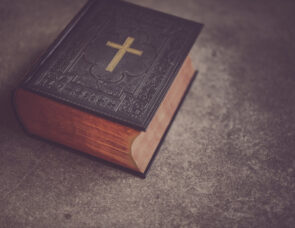A starter activity to give an overview of God’s special book, with possible links to Bible Sunday, or introducing the idea of regular Bible Reading, or the beginning of a series of sessions on the world’s bestseller.

On your marks
A starter activity to give an overview of God’s special book, with possible links to Bible Sunday, or introducing the idea of regular Bible Reading, or the beginning of a series of sessions on the world’s bestseller.
Get set
You will need:
- a selection of different types of books. Create your own from home or borrow some for a friend! Include: romance, factual/reference book, history, poetry, drama, sport, science fiction, a book of letters, jokes, guidebook, adventure story, murder mystery, cookery book, science book, biography, autobiography, a book of sayings, a songbook.
- a box containing 66 Books. Why not borrow the Church hymn-books (with permission!) or a similar collection
- a flip chart or plenty of A4 paper and pens
- 30 minutes for the session
Go
- Building on the children’s favourite books stories or magazines, discover the wide variety of types of written material that the group like.
- Use the collection of different books you have assembled and get them either individually or in groups to decide what sort of book each one is. Build up a library of types by creating labels of their choosing to describe the different types.
- Pick on the autobiography in particular – maybe one of a famous footballer or pop star – and discuss what sort of book it is. Because different people like different books, anyone who wanted to get everyone reading about them would have to use lots of different styles. Christians believe that is what God did when he wrote his autobiography, the Bible. It is a collection of lots of types of stories.
- I wonder how many books and types of books God used? Ask some of the group to unpack the box of 66 Books you have prepared. Now in turn ask different children to pick up various collections of numbers of these books:
- 39 and 27 gives us Old Testament and New Testament numbers
- 39 can become 5 and 34, which gives us the Abraham, Isaac, Jacob, Joseph, Moses storybooks and the rest
- 34 can become 10 and 24, which gives us the history books and the rest
- 24 can become 15 and 9, which gives us the prophets and the rest
- 9 can become 4 and 5, which gives us storybooks and the rest
- 5 can become 3 and 2, which gives us songs and poems and two books of wise words
- 27 can become 4 and 23, which gives us stories about Jesus and the rest
- 23 can become 21 and 2, which gives us the letters to Christians and the rest
- 2 can become 1 and 1, which gives us a history book and a book about the end of the world
Maybe make this into a challenge, as they pick up the right collections of books, when you call them out. Individuals should hold the right number between the palms of their hands or maybe attempt to make a human bookshelf all together.
- God put all these books together as one, and gave us the Bible. 66 for the price of 1!. Ask the children to make a tall pile of the 66 Books in the middle of the room.
You could follow this up with discovering some of the names of the different books and finding out which sort of book it is. You could then talk about the Bible using the following prompts:
- I wonder why God needed to use so many writers and types of writing in his autobiography?
- I wonder if any of the books could be left out and we would still know enough about God?
- I wonder whether any books are more important than any others?
- I wonder where I should start reading this autobiography?

 Download
Download